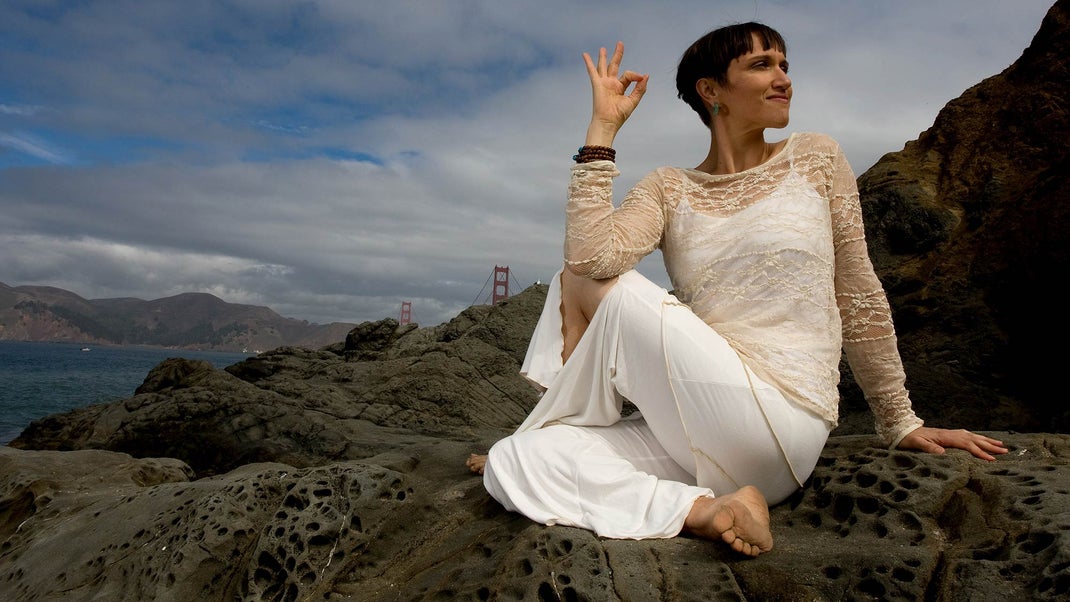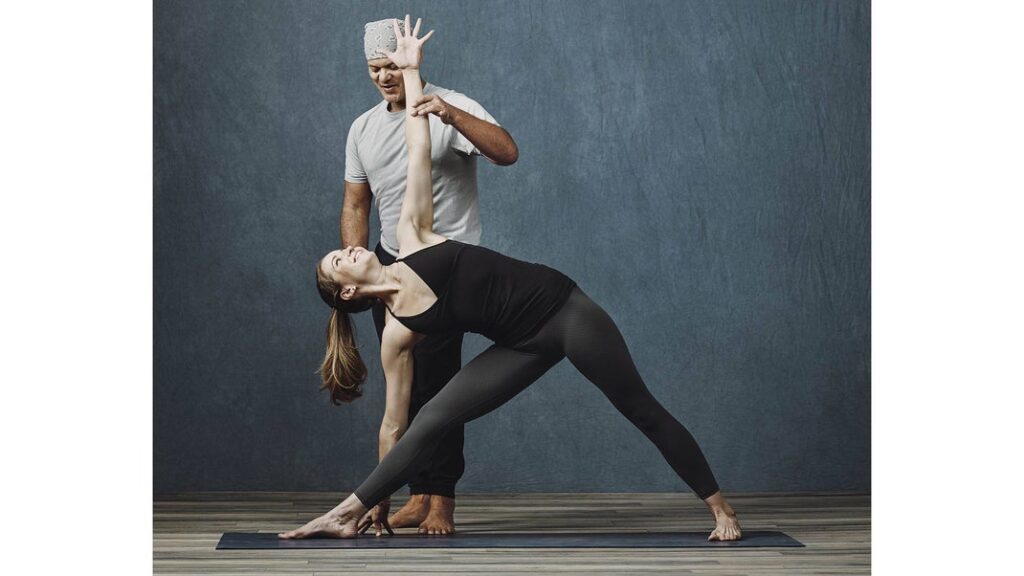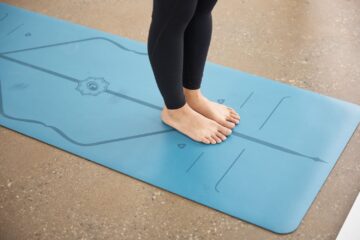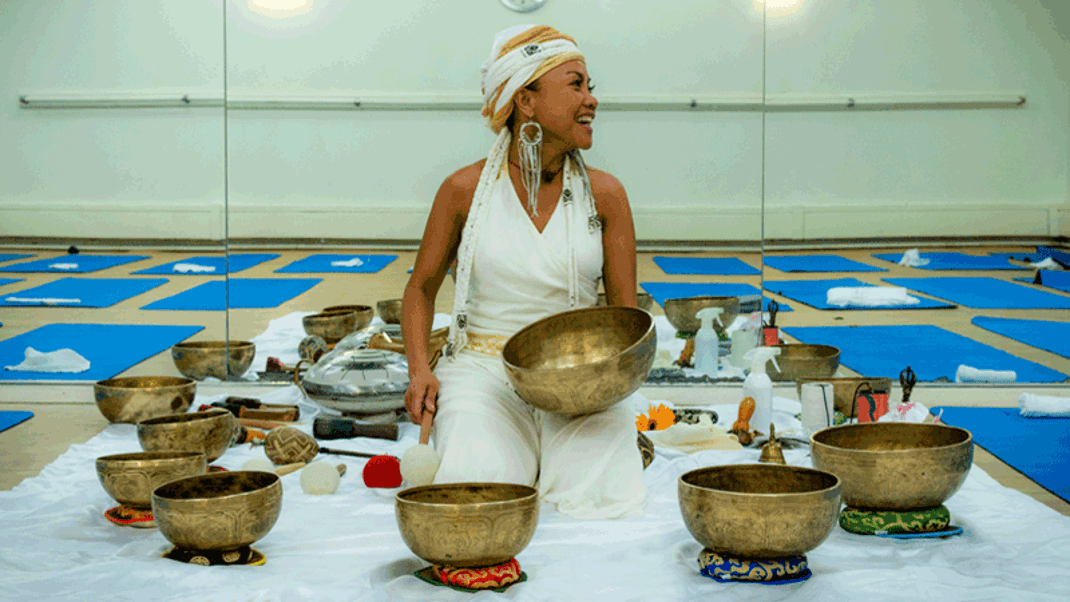Rajarajeshwari Yoga Academy (RYA) in Chennai, India is an institution that teaches Yoga in sign language to deaf people. This unique initiative has found acceptance among the PWD community and Yoga enthusiasts alike. RYA founder Rajarajeshwari spoke with us about her experience of teaching Yoga in sign language for over two decades now, and also shared some interesting insights on Deafhood Yoga.
Last month, Deafhood Yoga® re-launched its online studio, introducing new services and courses and allowing more students to practice yoga from anywhere with American Sign Language (ASL). To learn more about this fascinating topic, we interviewed Deafhood Yoga founder and its sole teacher, Rajarajeshwari, who recently relocated her studio from Walnut Creek, California, to Kailua, Oahu, where she now teaches at the Hawaii School for the Deaf and the Blind in addition to offering private classes and customized events.
Yoga Journal: Tell us more about your personal story. When and how did you discover yoga?
Rajarajeshwari: To be honest, yoga kept discovering me over the years.
The personal practice for me [began on the day I] was born on Earth. The Universe and God/dess entrusted me with the noble gift of American Sign Language (ASL) as a Deaf person. I always felt I was being nourished by the Breath of Life through the light of sign language. Sign language is a multidimensional language that connects to humans beyond national borders through spatial, tactile, visual, and kinetic [means].
As an empath, I felt strong connections with all paths of spirituality as a young child, especially with Buddhism, Deafhood, Hinduism (Yoga), and Native Americans. My first yoga class focusing on asanas was in 1991 in Washington, D.C. I drew stick figures to help [myself] remember the asanas.
In the year 2000, I encountered several traumas and decided to seek out various holistic approaches; I always evoked strong, positive responses in healing whenever I incorporated the five points of yoga: pranayama, relaxation, asanas, diet, and meditation. From there, I fully understood that the yogic path shows the way to health, which is our wealth.
Over the years, I explored the different styles of yoga, classes, and teachers. I attended [many] yoga classes without interpreters, and was often the only Deaf yogini at many yoga events. After many Savasana, I often visualized what the hearing yoga teachers were saying, and I would imagine how to inspire students with my articulated hands. People started to encourage me to teach yoga. I never thought of teaching yoga or establishing a yoga business/services until I took Deafhood courses in 2007, which paralleled with my yoga journey. At the same time, a dear hearing yoga teacher in San Francisco actually pushed me to test the waters by scheduling a yoga room and encouraged me to invite members of the Deaf communities. I was not a certified yoga teacher yet. The yoga teacher convinced me that he would teach and I would assist. Once the yoga class began, he was not able to communicate in ASL because he did not fully know the language at the time. Naturally, I could not let the yoga class stop, thus I took over. At the time in 2007, to my knowledge, there was no yoga teacher training provided in ASL, nor did I know any other yoga teachers who were Deaf. VHS tapes/DVDs back then [were not] subtitled or captioned, except for the Hawaiian yogini, Wai Lana, who had subtitles on her VHS tapes. My best option at the time was to find training online, where I could study directly. I discovered Joseph and Lilian Le Page’s (Kripalu/Integrative Yoga Therapy) Yoga Teachers’ Toolbox home training materials, which gave me a warm-up; however, I did not pursue certification. In 2009, my beloved dad died, unexpectedly. That experience turned my life upside down. My solar plexus chakra (fire) was fueled into becoming a certified meditation/yoga teacher to share the classical Hatha yoga from the Sivananda lineage, to reduce human suffering in humanity, worldwide.
YJ: Explain the concept of “Deafhood” and how it applies to Deafhood Yoga.
Rajarajeshwari: It’s important that we stress the label “Deaf” comes from hearing white males in the medical field. The term reflects the pathological perspective of deafness. The word comes with battered baggage, dragging the heavy burden imposed by the historically wrong perception that deaf people are “deficient” and they need to be fixed. And still today, [the] heartbreaking eugenics of drilling holes in the skulls of our precious Deaf babies is being enforced by instilling scare tactics in parents and feeding them notions of false promises to normalize and perfect their child. This is a distribution of ignorance, privilege, and wealth that’s bound by ego, greed, and fear, and a violation of the first three Yamas of the Eight Limbs of Yoga: ahimsa (non-harming), Satya (non-lying), and asteya (non-stealing).
The vision, passion, and business concept [for Deafhood Yoga] started in 2008 after I experienced the depth of Dr. Paddy Ladd’s book, Understanding Deaf Culture: In Search of Deafhood as a part of a semester course at California School for the Deaf. In that class, our teacher presented a quote by Dr. Ladd, who stated, “Deafhood is a process to decolonize our mind, body, and spirit from colonization.” Suddenly, I received a powerful vision to marry the concepts of Deafhood and Yoga. Both embody self-acceptance, self-care, and the self-love of the whole person. Both raise consciousness and shine the light of truth on injustice. To me, the word “Deafhood” means the consciousness of sharing a similar experience growing up as a Deaf person, like childhood, sisterhood, motherhood, etc. It’s also a journey that each Deaf person undertakes to discover their true identity and purposes here on the Earth as a Deaf person. This identity journey is a prominent one, especially [because] when a cultural linguistics community is oppressed, the survival instinct becomes the greatest source of inspiration.
YJ: What’s the difference between teaching yoga in ASL versus English or other spoken languages?
Rajarajeshwari: Since spoken English is a linear language and eye contact is optional, most of the information is delivered auditorily. ASL users need to have constant eye contact with their teacher to receive instructions clearly. This requires a unique space arrangement for all the students to utilize an equal line of sight as much as possible. In Deaf-centered yoga classes, it is usually in a circular arrangement, versus a grid pattern for English or other spoken languages. The energy of our language is always moving, multidimensional, and best flows in open space.
YJ: Why have you launched a new online studio?
Rajarajeshwari: This launch is for a new set of series, 5 Petals of Life™, and other online courses (Deafhood Yoga has been operating the overall online studio since 2013). It’s a constant challenge for Deaf yogi/is to have equal access at yoga classes led in spoken [languages]. First of all, yoga requires the student to move constantly, which means little eye contact and lip-reading the teachers. Most Deaf students have had to “mimic” the moves by other students, and they often miss the safety of techniques. Detailed explanations, breathing, or any other audio information was not received.
Therefore, Deafhood Yoga emerged out of the necessity for a Deaf-centric space. This yoga and Deaf space embrace the communication of yogic teachings through ASL from a Deaf teacher to other Deaf people without compromising our language and culture.
The online studio is a positive solution due to geography challenges, as our Deaf people are located worldwide with almost no yoga teachers who are Deaf like themselves in their home areas.
YJ: You recently integrated yoga classes into the education curriculum at the Hawaii School for the Deaf and the Blind.
Rajarajeshwari: Last month, the Hawaii School for the Deaf and the Blind hired me as a teacher, and is ecstatic to bring yoga to the K–12 school curriculum. They are the first Deaf school, globally, to do this for our Deaf students. This gives us the opportunity to share and embrace the benefits of yoga for harmonious minds, bodies, and spirits throughout their self-care, academic performance, and positive contributions to humanity. We look forward to seeing this blossom in other Deaf schools. Within a month, our Deaf students already showed the positive impact of yoga in their other classes. They are fabulous!
YJ: Are there any plans for a Deafhood Yoga Teacher Training?
Rajarajeshwari: It is a long-term goal to establish a Deafhood Yoga Teacher Training Course. We have received numerous requests for this type of training. I am also a Yoga Alliance Continuing Educator Provider (YACEP), offering support to yoga teachers who want to continue their training in ASL. You can learn more about this course and our other services here.
Conclusion:
Yoga Founder Rajarajeshwari Teaches in Sign Language
Rajarajeshwari has been teaching yoga since 2001 and is the founder of Deafhood Yoga. Her classes focus on sign language, which allows deaf students to fully participate and learn the yoga poses and breathing exercises. She has recently integrated yoga into the education curriculum at the Hawaii School for the Deaf and the Blind. In addition to her work with schools, Rajarajeshwari also offers online classes and teacher training courses. Yoga Journal interviewed her about her unique approach to teaching yoga.
Deafhood Yoga is a space where deaf people can come together to learn yoga from a teacher who understands their unique and experiences. The online studio offers classes




